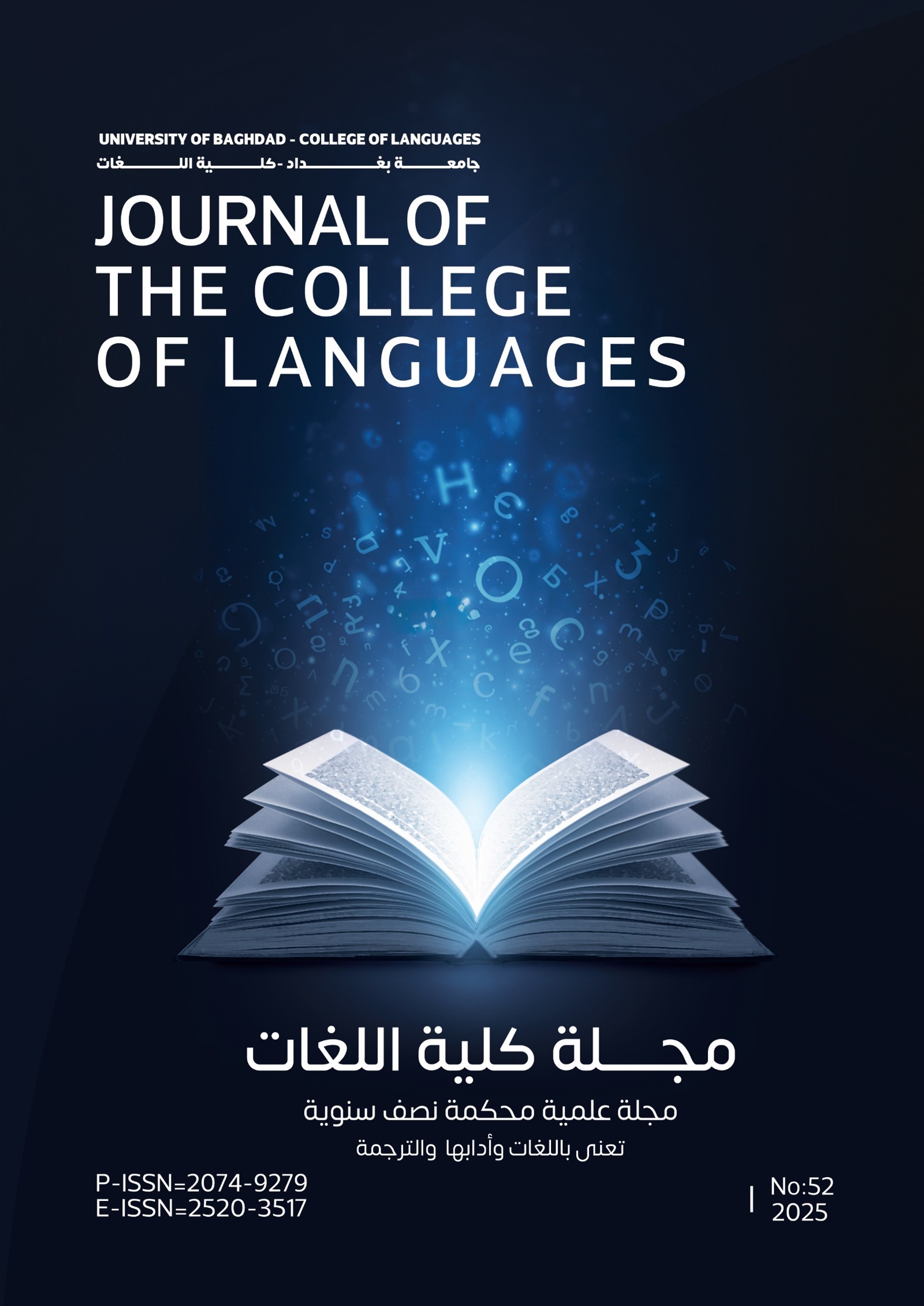L’imaginaire de l’épidémie dans La Peste d’Albert Camus et Le Choléra de Nazik al-Malaika The Imagination of Epidemic in Alber Kamo's Novel " Plague" and Nazik Al-Malaekah's poem "Cholera"
Keywords:
littérature comparée, le récit de l’épidémie, Albert Camus, Nazim al-Malaika, l’image de la guerre dans la littératureAbstract
The present study deals with the story of Epidemic in two literary works issued in the same year (1947). One of them is a novel titled "Plague" written by the French writer Alber Kamo, the second is a poem of the Iraqi poetess Nazik Al-Malaekah. The research reflects a contrastive study of the war vision in the two works as both writers used science to serve literature by using Epidemic as a metaphor to refer to the dangers that the societies faced.
The problem of the present research lies in answering the question about the reason that makes the two writers use metaphor while narrating the issues of the society instead of mentioning them directly and illuminate what implications do the narrative style of Epidemic story have and the story of war does not have?
The research consists of three main chapters. The first chapter studies the narrative aspects of the two works clarifying the characteristic of narration in the story of Epidemic. The second chapter deals with the image of war and its meanings in the two works while chapter number three deals with the two writers' premonition about the danger that threatened humanity which was considered more than being a mere Epidemic.
The results of the research show that using metaphor to refer to the war and the bad conditions in the society comes from the view that the epidemic (whether Plague or Cholera) is a kind of disease that we can not put an end to completely as it goes through sabbatical periods and then reactivates upon the availability of the factors that help to spread it. At that time, the condition of society is threatened by instability. The plague which was spread in Wahran –a city in Algeria and which Kamo narrates its details is a metaphor about the second world war and the Germanic's occupation to France as there are clear hints about this in the text, While, Nazik Al-Malaekah mentions death that came as a result of the widespread of Cholera in Egypt. She mentiones in her memories that she heard that the number of the dead people increased from six hundreds to one thousand, a matter which makes her write this poem. In fact, this news was a stimulus for her to express the Iraqi condition particularly and the Arab Homeland generally as well as to express the persecutions, oppressions and murders that they suffer from "death is what humanity complains from" as the poet explains.
Choosing epidemic as a frame and a narrative material to talk about an era in which the political and social conditions suffered from instability is a means to express. Thus , disease and here epidemic has numbers of historical, scientific and paranormal implications which can really reflect the status of the society. Epidemic is not only a disease that infects an individual or group of people but it is an uncontrolled, fast-spreading danger whose treatment tends to be impossible a matter which makes AL-Malaekah consider death a remedy from this epidemic. Thus, it is an extreme case of disability and horror which the epidemic causes. The two writers call for choosing such images to talk about the miseries that affect the humanity. Historically, epidemic registered numbers of stories that reflects the disasters that affects the humanity. Kamo mentions and numerates the plagues and its victims through different periods. Thus, epidemic is an inclusive case of expression.







